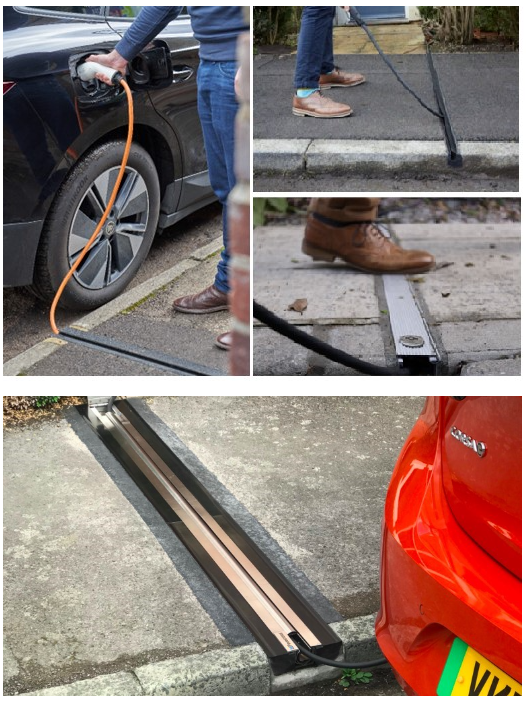Guidance to help local authorities to develop policies on the safe use of cross-pavement electric vehicle charging solutions.
Introduction
This guidance is designed to help local authorities in England to develop policies about the safe and effective use of cross-pavement electric vehicle (EV) charging solutions, which can provide residents with convenient charging options.
It provides information on the areas, regulations, and processes to consider when forming policy. The guidance includes case studies of local authorities that have successfully trialled installation.
The cross-pavement charging solutions market is at an early stage. However, a variety of solutions have been trialled by local authorities who have shared the processes they have adopted and learning points within this guidance.
The decision to allow the installation of a cross-pavement solution in the public highway rests with the relevant local authority. The suitability of an individual location is dependent on factors set out in this guidance.
Benefits of cross-pavement charging solutions

Cost and convenience to charge
For residents, domestic charging is often cheaper and more convenient to use than public infrastructure. Cross-pavement solutions allow an EV cable to pass across or through a pavement in a safe manner, in certain cases enabling access to domestic tariffs where residents do not have dedicated off-street parking.
Removes risk of trailing cables
As domestic charging is often cheaper and more convenient, some EV owners without off-street parking have been trailing cables from their properties across the pavement. This can cause a trip hazard for members of the public, especially individuals with limited mobility and/or sensory impairments, and may amount to a breach of Part IX of the Highways Act 1980. Cross-pavement solutions reduce the risk of trailing cables and allow a safe way of charging without off-street parking.
Access to smart EV charging
Cross-pavement solutions enable drivers to access domestic flexible smart tariffs which further reduce the price of charging and benefit the electricity grid and enable increased utilisation of renewable energy.
Street furniture and protection of green spaces
Many cross-pavement solutions do not add additional street furniture such as bollards, or require reserved parking bays, so they can provide additional options in areas where on-street public charging may be less practical, complementing the public charging offer in a locality.
In addition, in some areas, EV users without off-street parking have been converting their front gardens into driveways. The installation of cross-pavement solutions can prevent the need for doing so, protecting urban green spaces.
Access to domestic EV charging
Statistics from the English Housing Survey (EHS) estimate that approximately 8 million households (32%) in England do not have access to off-street parking, such as a drive, garage, or residential car park.
However, of those, almost 4 million households (16%) have access to ‘adequate on-street parking’, defined in the EHS as ‘street parking generally being available outside or adjacent to the house or block of flats where the surveyed flat is located, and the road is sufficiently wide to allow easy passage of traffic’. These households could potentially benefit from domestic EV charging safely with the installation of cross-pavement solutions.
As well as the above benefits of cross-pavement EV charging solutions, this guidance for local authorities also has sections on:
- solution types
- policy design
- permissions and permits
- minimum standards for installation and apparatus
- responsibilities and liability
Useful case study examples are also included from Milton Keynes City Council; London Borough of Brent; Oxfordshire County Council; Nottinghamshire County Council; and Central Bedfordshire Council.
This guidance applies to England only, as road works are a devolved area, and each part of the UK handles access to the road in different ways. For further information and enquiries regarding Northern Ireland, Scotland, and Wales, contact details are provided on this page.
